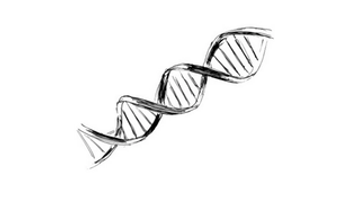
Jonathan C. Trent, MD, PhD: Different Types of Liposarcoma
What are the different types of liposarcomas, and how do they differ?
here are several different types of liposarcoma, and these types of liposarcoma represent a very broad range of clinical activity. You could begin at one end of the spectrum with a typical lipomatous tumor, also called a well differentiated liposarcoma. These are indolent tumors. They’re not metastatic. They may grow in size, in fact, in maybe a millimeter or so a year. So these are very slow growing. On imaging by CT scan or MRI, these would have the appearance of pretty similar to normal fat, normal fatty tissue. When a surgeon resects a well differentiated or atypical lipomatous tumor, they look very similar to normal fatty tissue.
However, there are more aggressive types of liposarcoma. A well differentiated liposarcoma or an ALT may result in evolution into a dedifferentiated liposarcoma. A dedifferentiated liposarcoma is a more aggressive tumor. These can recur locally. These even can metastasize. These are the types of sarcoma, when metastatic, that we treat with chemotherapy even in the advanced setting. These are sarcomas that could be treated with systemic therapy.
An additional type of liposarcoma is called mixoid or round cell liposarcoma. This type of liposarcoma is different than a dedifferentiated liposarcoma. Dedifferentiated liposarcoma is driven by gene amplification of a chromosome that includes mdm2 and CDK. Mixoid round cell liposarcoma has a different type of translocation that still results in an aggressive tumor with metastatic potential. So those are the basic types of liposarcoma.
The fourth type of liposarcoma would be termed a pleomorphic liposarcoma. This is an aggressive high-grade sarcoma with a high metastatic potential similar to dedifferentiated and mixoid round cell.
CASE: Soft-Tissue Sarcoma Case 2
Michael C is a 59-year-old social worker from Los Angeles California; his medical history is notable for obesity, COPD, and mild hypertension.
- In January of 2014, he presents to his PCP with complaints of right lower leg pain of several weeks’ duration
- Physical exam was unremarkable except for swelling of the lower right calf; x-ray of the affected leg was negative for fracture
- MRI scan of the lower right calf showed a 20 cm well defined lobular mass arising between the gastrocnemius and soleus
- Biopsy of the mass showed myxoid liposarcoma with round cell component. Patient underwent en bloc resection of the tumor following preoperative radiotherapy
- Gross examination showed the tumor to be 10 × 8 × 15 cm with gelatinous brownish appearance
In September of 2014, Michael returns for follow up and his CT scan shows a 4 cm posterior mediastinal mass, and a 6 cm perinephric mass suspicious for metastatic disease. He initiates treatment with anthracycline and ifosfamide chemotherapy (6 cycles) for recurrent disease and shows a partial response.
- In May of 2015, he returns for follow up with intermittent chest and lower back pain; CT scan is consistent with progression of the mediastinal and perinephric masses, and bone scan shows new lesions occurring in the L2 and L3 lumbar vertebrae
- At recurrence, liver and renal function and CBC are within normal limits, and his ECOG performance status is 1
- He received treatment with trabectedin (1.5 mg/m2 24-hr infusion given every 3 week)
- At the 2nd cycle he develops febrile neutropenia (ANC< 500 cells/mm3) requiring hospitalization
- The oncologist reduces his trabectedin dose to 1.2 mg/m2; he continues therapy
- Within 1 week, he shows clinical improvement and CT scan shows slight improvement










































